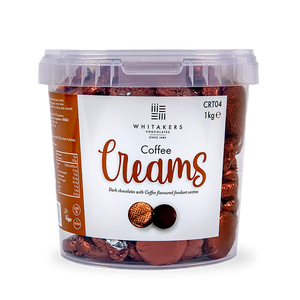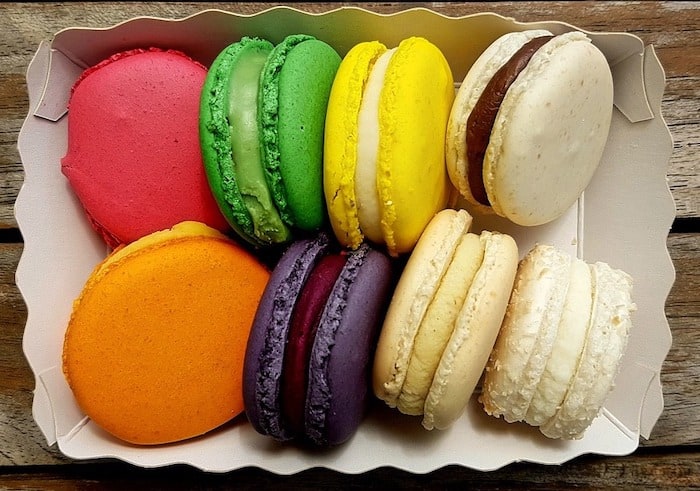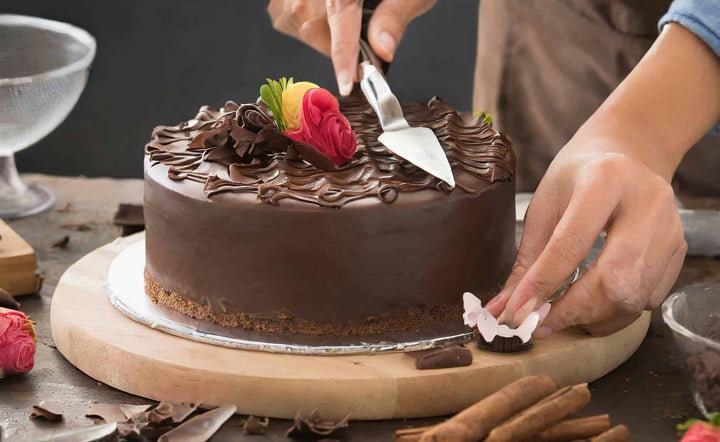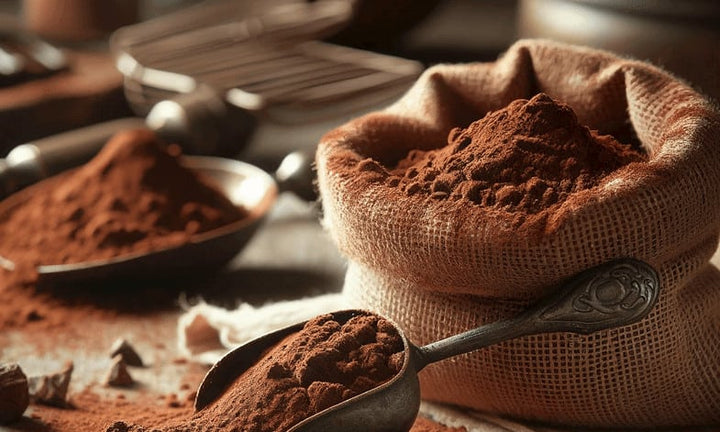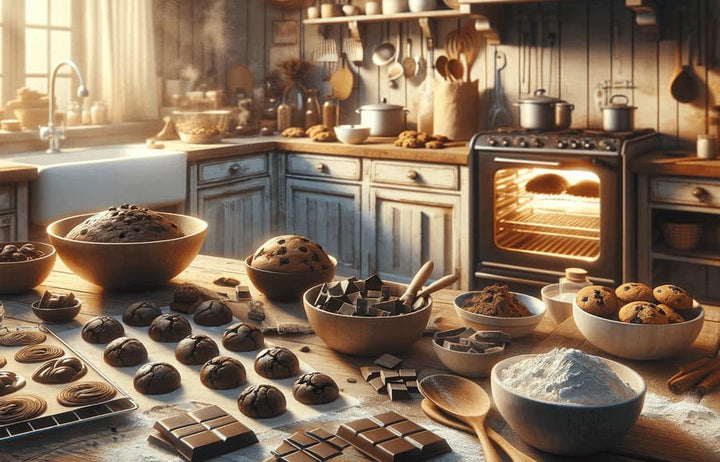Patisserie, which evokes images of delicate pastries, intricate cakes, and exquisite baked goods, is a cornerstone of the culinary arts, particularly renowned in French cuisine.
This post aims to whisk you into the enchanting patisserie world, where flour, butter, sugar, and eggs are transformed into edible art.
Renowned for its precision, creativity, and meticulous attention to detail, the patisserie is not just about baking; it's a craft that blends science and artistry, tradition and innovation.
From the flaky layers of a perfectly baked croissant to the intricate designs of a gateau, each creation in a patisserie is a testament to the skill and passion of its maker.
What is Patisserie?
Patisserie, a term rooted deeply in French culinary tradition, refers to the art of making pastries, particularly those that are sweet and often intricately decorated.
It also describes the establishment where these delicacies are made and sold, akin to a bakery but specifically focusing on sweet and elegant pastry items.
The realm of patisserie encompasses a wide range of baked goods, characterised by their finesse, delicacy, and the skill required to create them.
Key elements of patisserie include:
-
Cakes and Tarts: These are often the centrepieces of patisserie, ranging from simple sponge cakes to elaborate, multi-layered creations. Tarts are also a staple with their crisp pastry base and varied fillings.
-
Pastries: This broad category includes items like croissants, Danish pastries, and éclairs. They are typically made from light, flaky pastry dough and can be sweet or savoury, though sweet variants are more common in patisserie.
-
Macarons and Petit Fours: These small, delicate items are quintessential to French patisserie. Macarons are famous as elegant treats with their colourful, meringue-like shells and creamy filling, petit fours, miniature cakes or pastries.
-
Choux Pastry Items: Including profiteroles and cream puffs, these are made from a light pastry dough that puffs up in the oven, creating a hollow centre that can be filled with cream or other sweet fillings.
-
Biscuits and Cookies: Ranging from simple butter biscuits to more elaborate, decorated cookies, these are often served as accompaniments to tea or coffee.
Patisserie is as much about aesthetics as it is about flavour.
The presentation of patisserie items is critical, emphasising decoration, colour, and arrangement, making them a delight to taste and a feast for the eyes.
The art of patisserie demands precision, creativity, and a deep understanding of baking techniques.
It's a discipline that requires patience and attention to detail, making it a respected and specialised field within the culinary arts.

What Sorts of Products Are Sold in a Patisserie?
A patisserie, known for its exquisite and refined baked goods, typically offers a wide range of sweet products that are both visually appealing and delicious.
Here are some of the common types of products you might find in a patisserie:
-
Cakes: Elegant and often elaborately decorated, ranging from classic sponge cakes to layered cakes with various fillings and icings.
-
Tarts: These include fruit tarts with fresh, glazed fruits on top, lemon tarts, and other sweet pastry crusts filled with rich custards or creams.
-
Pastries: Various flaky, buttery pastries such as croissants, pain au chocolat, Danish pastries, and puff pastries, often filled with fruit, cream, or chocolate.
-
Macarons: The iconic, small, round, meringue-based confections with a smooth, domed top, flat base, and a sweet filling in between.
-
Éclairs and Choux Pastry Items: Including cream puffs, profiteroles, and éclairs, made with light choux pastry and filled with cream or custard.
-
Petit Fours: Small, bite-sized confections, either glazed or iced, can be cake-based or made from marzipan, meringue, or other pastry elements.
-
Biscuits and Cookies: Delicate and often beautifully decorated cookies and biscuits, ranging from simple butter cookies to more intricate varieties.
-
Mousse and Cream-Based Desserts: These include layered mousse cups, crème brûlée, and panna cotta, which are known for their smooth and creamy textures.
-
Bread: Some patisseries also offer a selection of artisan bread, although this is more typical of a traditional bakery.
-
Seasonal and Festive Specialities: Yule logs at Christmas, galette des rois for Epiphany, or hot cross buns during Easter.
Each item in a patisserie is crafted with precision and artistry, making it a culinary delight and a visual treat.
The range of products in a patisserie can vary depending on the location, the chef's expertise, and local preferences, but the emphasis is always on quality, flavour, and presentation.
Related Post: What is Gianduja Chocolate?
What is a Patisserie Chef?
A patisserie chef, often known as a pastry chef in English, is a culinary professional specialising in creating pastries, desserts, breads, and other baked goods.
This role demands a unique blend of artistic skill, precision, and a thorough understanding of baking and pastry techniques.
Key aspects of being a patisserie chef include:
-
Expertise in Baking and Pastry Techniques: A patisserie chef must have a deep knowledge of the science and craft of baking. This includes understanding how different ingredients interact, mastering various baking techniques, and being proficient in preparing a wide range of pastry and dough types.
-
Artistic Flair and Creativity: Presentation is crucial in patisserie. Pastry chefs are often known for their creative skills in decorating cakes, sculpting sugar, and designing visually stunning and delicious desserts.
-
Precision and Attention to Detail: Baking is a precise science. Patisserie chefs must be meticulous with measurements, temperatures, and timing to ensure consistent quality and execute complex recipes successfully.
-
Innovation and Keeping Up with Trends: The patisserie world is constantly evolving. A good pastry chef stays informed about the latest trends, techniques, and flavours and can innovate and adapt to keep their creations fresh and exciting.
-
Organisational Skills: Running a patisserie kitchen requires strong organisational skills, from managing kitchen staff and overseeing the production process to ensuring quality control and maintaining inventory.
-
Passion for the Craft: Perhaps most importantly, being a patisserie chef requires a genuine passion for creating sweet treats. This enthusiasm often drives pastry chefs to perfect their craft and make exceptional baked goods.
Patisserie chefs can work in various settings, including speciality patisserie shops, restaurants, hotels, and bakeries.
They may also specialise in certain areas, such as chocolate making, cake decorating, or artisan bread baking.

What Are the Pastries Used in Patisserie?
In the patisserie world, various pastries are used as the foundation for creating an array of elegant and delectable baked goods.
Each type of pastry has unique characteristics and is used for specific purposes.
Here are some of the critical pastries commonly used in patisserie:
-
Puff Pastry (Pâte Feuilletée): This is a light, flaky pastry made from layers of dough and butter. The layers expand when baked, creating a soft, airy texture. It's used for items like vol-au-vents, turnovers, and mille-feuille.
-
Shortcrust Pastry (Pâte Brisée): A versatile pastry crumbly in texture, made from flour, butter, and water. It's commonly used for tarts, quiches, and pies.
-
Sweet Pastry (Pâte Sucrée): Similar to shortcrust but with the addition of sugar, making it slightly sweeter and more delicate. It's ideal for sweet tarts and dessert cases.
-
Choux Pastry (Pâte à Choux): A light, airy pastry used for éclairs, profiteroles, and cream puffs. It puffs up in the oven, leaving a hollow centre that can be filled with cream or other fillings.
-
Filo Pastry (Phyllo): Extremely thin, light sheets of pastry used in layers, often with butter or oil brushed between layers. It's used for desserts like baklava and some types of pies.
-
Sable Pastry (Pâte Sablée): A crumbly pastry similar to shortbread, made from flour, butter, egg, and sugar. It's known for its rich, buttery texture and is used for cookies and tart bases.
-
Brioche: A rich, soft bread-like pastry made with a high proportion of eggs and butter, giving it a tender, flaky texture. It's often used for sweet breads and rolls.
-
Danish Pastry (Pâte Danoise): A sweet, laminated yeast pastry similar to puff pastry but with added yeast. It's used for making Danish pastries with various sweet fillings.
These pastries form the basis of many patisserie creations, allowing for various textures and flavours.
The skill of a patisserie chef lies in choosing the proper pastry for each product and mastering the techniques to prepare these pastries to perfection.
Where Can You Buy Delicious Chocolate?
Whitakers Chocolates, renowned for our long history in crafting delicious and affordable chocolates, offers a range of options suitable for everyone, including vegetarian, vegan, and gluten-free choices.
Our top-selling products, such as indulgent Coffee Creams, Neapolitans, Chocolate Wafer Thins, Stem Ginger and Luxury Chocolate Truffles, are the perfect accompaniments to enhance your mocha coffee experience.
Some Notes From an Expert Chocolatier
As an expert chocolatier, one of the aspects of my profession that fills me with immense pride is the creation of high-quality melting chocolate crafted explicitly for use by patisserie chefs.
This chocolate is not just an ingredient; it's a vital component that can elevate a pastry from the ordinary to the sublime.
In crafting this chocolate, precision and balance are key.
It's a delicate process of balancing flavours and textures to ensure that when the chocolate melts, it integrates seamlessly into the patisserie creations, enhancing them without overpowering them.
The consistency, cocoa content, and smoothness are meticulously calibrated to meet the exacting standards of fine pastry making.
Working closely with patisserie chefs, I've gained unique insights into how chocolate behaves in different pastry applications.
This collaboration is a continuous learning experience, driving innovation and perfection in both our crafts.
The satisfaction of seeing my chocolate become part of exquisite patisserie items is immensely gratifying.
Final Notes On Patisserie
Patisserie represents an exquisite and refined branch of the culinary arts, characterised by its elegance, artistry, and the intricate skill required to create each piece.
The patisserie world is one of precision and creativity, where simple ingredients like flour, butter, sugar, and eggs are transformed into a diverse array of stunning and delicious creations.
From flaky croissants and delicate macarons to elaborate cakes and tarts, each item is a testament to the meticulous craftsmanship of the patisserie chef.
Patisserie is not just about indulging the palate; it's a celebration of culinary tradition, innovation, and the sensory pleasure of food.
The artistry involved in patisserie extends beyond taste to the visual presentation, making each creation a feast for the eyes and the taste buds.
The meticulous attention to detail and the passion for perfection make patisserie a unique and respected discipline in gastronomy.
